Imagine that you are in a theater listening to an orchestra. Do you notice that all the musicians refer to the same set of music sheets to ensure that they play their instruments in sync? Just like an orchestra performance, organizations also require aligning various components so that there is a harmonious content management performance. This blog describes the elements that they both have in common.
First, let’s describe what an orchestra is. An orchestra is an ensemble of instruments that includes woodwind, brass, string, and percussion sections. A group of musicians performs various pieces of music with these instruments, creating a captivating experience for an audience. Under the direction of the conductor, everyone needs to play music in harmony to ensure that the audience enjoys the music performance. An orchestra performance is an example of leadership, collaboration, coordination, learning, and exemplary execution, a lot like the characteristics needed to successfully manage knowledge in any organization.
For the purpose of this blog, organizational content is the equivalent of the music that is delivered by an orchestra to the target audience. Let’s take a look at how similar content management is to an orchestra performance.
The Conductor (Content Lead)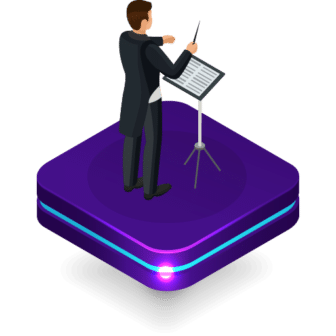
An orchestra conductor has a vision of how the orchestra should sound when playing each piece of music. The conductor keeps an orchestra in time and together, lets each musician know their time of entry, and is able to give each musician direction about what they should be doing at any given moment during the performance. One of the main responsibilities of a conductor is to fully understand each piece of music and effectively communicate to the musicians so that they understand it completely, which is mostly done with gestures and the aid of a baton. Additionally, by being readily available to the musicians prior to the performance as well as visible from a podium during the performance, the conductor ensures that the communication channels with all orchestra members are effective at any given time (e.g. during rehearsal, on stage, etc.).
Similarly to an orchestra conductor, a Content Lead needs to have not only a clear vision of all key content areas in the organization, but also the ability to effectively communicate with content authors and content owners, so that they can create, tag, and maintain quality content. Defining a content governance plan, a taxonomy governance plan, and identifying effective communication channels and tools (what would be the gestures and the baton for the orchestra conductor) are essential to transfer that content management vision to content authors and content owners successfully. Examples of communication channels and tools may include recurring group meetings, one-on-one discussions, centralized content repositories, portals, and any other tools that can help govern content and taxonomies consistently.
The Instruments (Content Types)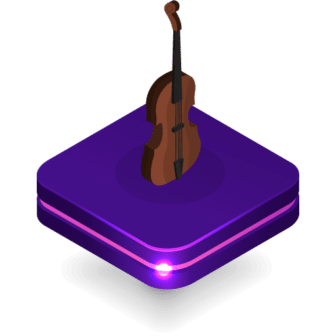
From the lively and sparkling sounds of violins to the dry and rattling sounds of percussion instruments, the graceful and clear sounds of a flute to the vibrant brass sections, listening to all the instruments playing together and in harmony in an orchestra is an impressive musical spectacle. Each instrument has a different appearance, a different purpose, and requires a specific technique to be played. They all produce different sounds that when put together, produce a magnificent piece of music.
Even though content types are not as graceful as musical instruments, in content management, content types represent types of instruments, each with a purpose to create and manage a specific type of content. Content types are like templates for categories of content with corresponding taxonomies that allow managing information in a centralized, reusable way. Some content types are designed to create announcements, others to create corporate policies, but together, all content types help communicate key organizational content to the end users in a standard and consistent way.
The Musicians (Content Authors and Content Owners)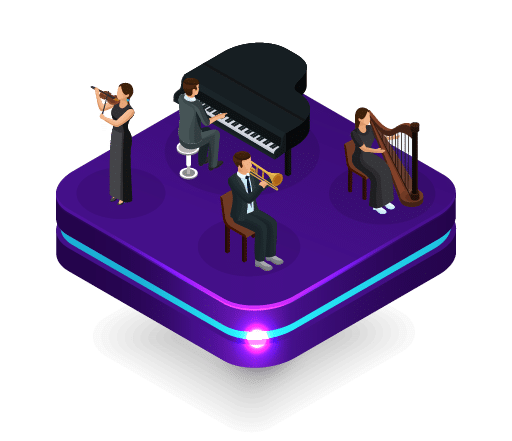
Without exception, successful orchestras around the world have clearly defined roles and responsibilities. If the conductor has done a good job communicating the expectations of the musical performance to the musicians, and the musicians have mastered playing their own instruments, then they can play their instruments accordingly and transmit a unified vision of the music to the audience. Every musician must not only follow the same set of music sheets, but also understand their own role, the roles of their fellow musicians, and when the handoffs need to take place during the performance.
Similarly, in content management, the content authors and content owners are like the musicians. They are tasked with very specific roles, in this case to create, tag, manage, and disseminate organizational content. If they have a good understanding of the organization’s content management objectives and have the knowledge management skills needed to perform their roles, they can effectively create and maintain organizational content, communicating a clear and unified vision of the content to the end users. In the same way that musicians spend time practicing and learning the skills to master their instruments, content authors and content managers need to clearly understand how to leverage content types and taxonomy to create and manage content and master the skills needed to meet their content management responsibilities.
The Music Sheet (Business Taxonomy)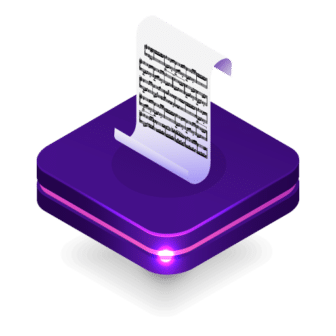
In an orchestra, even though every instrument gets their own music sheet, the conductor gets a full score, or in other words, a music sheet that contains the musical notation for all instruments, so that the whole orchestra starts playing together at the same time and performs at the same tempo throughout the performance.
An enterprise taxonomy represents that standard point of reference that can help orchestrate organizational content, so that content authors and content managers can ultimately leverage content types and taxonomy together to collaborate and produce consistently tagged, high-quality content.
The Audience (End Users)
Focusing on a particular target audience when planning and rehearsing for a performance helps musicians connect with their audience during the actual performance. Who is the audience? What is the music really trying to convey to the audience? From behind their music stands, the musicians sitting nearest the audience typically sit at a diagonal facing partly toward the conductor and partly toward the audience, so that the audience can be more engaged. Those in the front rows can look at the musicians closely, see them smile at the end of each musical piece, and more naturally react to the music with joy.
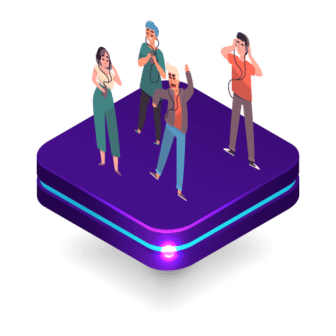 In content management, learning about your audience is indispensable to serve end users with the content they need, when they need it. Depending on the type of organizational content and where it will be displayed (e.g. Intranet, portal, dashboard, etc.), your audience may be internal, such as employees, or external, including customers, partners, and even prospective groups. Understanding your audience means gaining a clear understanding of their motivations, needs, goals, and challenges, so that the content is delivered in a manner that meets their content needs, resonates with them, and appeals to them. The use of personas and user stories help organizations move from knowing their audience to most importantly, understanding their audience and delivering timely, targeted content. In the same way that a venue may solicit feedback from the attendees to identify how well received the orchestra performance was, there are multiple approaches that organizations can take to measure the effectiveness of their content and identify whether the content is performing as expected. Only if content is measured, it can be managed and improved.
In content management, learning about your audience is indispensable to serve end users with the content they need, when they need it. Depending on the type of organizational content and where it will be displayed (e.g. Intranet, portal, dashboard, etc.), your audience may be internal, such as employees, or external, including customers, partners, and even prospective groups. Understanding your audience means gaining a clear understanding of their motivations, needs, goals, and challenges, so that the content is delivered in a manner that meets their content needs, resonates with them, and appeals to them. The use of personas and user stories help organizations move from knowing their audience to most importantly, understanding their audience and delivering timely, targeted content. In the same way that a venue may solicit feedback from the attendees to identify how well received the orchestra performance was, there are multiple approaches that organizations can take to measure the effectiveness of their content and identify whether the content is performing as expected. Only if content is measured, it can be managed and improved.
Conclusion
By helping your organization focus on these five elements, you could find yourself delivering an exemplary knowledge management performance alongside a content management team that earns a standing ovation. Next time you go to an orchestra performance, and while you enjoy the music, try closing your eyes and think about all that was required to make that performance happen.
Need help with orchestrating your organization’s content management journey? Contact us.

